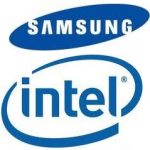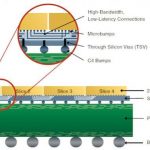You are currently viewing SemiWiki as a guest which gives you limited access to the site. To view blog comments and experience other SemiWiki features you must be a registered member. Registration is fast, simple, and absolutely free so please,
join our community today!
Are you a TSMC customer or partner? If so, you’ll want to take a look at these presentations from the 2013 TSMC Open Innovation Platform conference:
…
Read More
At TSMC’s latest earnings call held mid January 2014, an analyst asked TSMC for a revenue forecast for their emerging 2.5/3D product line. C.C. Wei, President and Co-CEO answered: “800 Million Dollars in 2016 ”. TSMC has demonstrated great vision many times before. For me, an enthusiastic supporter of this technology, this statement… Read More
There is a rumor making the rounds that Altera will leave Intel and return to TSMC. Rumors are just rumors but this one certainly has legs and I will tell you why and what I would have done if I were Altera CEO John Daane. Altera is a great company, one that I have enjoyed working with over the years, but I really think they made a serious mistake… Read More
I met with Tom Quan of TSMC and Michael Beuler-Garcia of Mentor last week. Weirdly, Mentor’s newish buildings are the old Avant! buildings where I worked for a few weeks after selling Compass Design Automation to them. Odd sort of déja vu. Historically, TSMC has operated with EDA companies in a fairly structured way: TSMC … Read More
Recent headlines suggest that Intel was not transparent about some of the products they showed at the CES keynote. Intel confirmed on Friday that they used ARM-based chips for some of the products but would not say which ones. When your company’s tag line is “Intel Inside” and you hold up a product during your keynote wouldn’t… Read More
One of the big questions on Intel’s foundry strategy is: Can they compete on wafer pricing? Fortunately there are now detailed reports that support what most of us fabless folks already know. The simple answer is no, Intel cannot compete with TSMC or Samsung on wafer pricing at 28nm, 20nm, and 14nm.
In fact, recent reports have shown… Read More
… were given to an ever shrinking audience. This is IP-SoC paradox: audience has enjoyed very good presentations made by TSMC (for the first time at IP-SoC, as far as I remember), SMIC, D&R, Gartner or ST-Microelectronic, to name just a few. The event is well organized, on the morning you can listen to keynotes in the largest … Read More
As a professional conference attendee I see a lot of keynotes, some good and some bad. I saw a great one from Kurt Shuler at the SEMICO IP Impact Conference last week. Why this conference was not standing room only I do not know. Kurt’s characterization of the semiconductor industry was well worth the price of admission. I didn’t actually… Read More
A couple of weeks ago, Xilinx and TSMC announced the production release of the Virtex-7 HT family, the industry’s first heterogeneous 3D ICs in production. With this milestone, all Xilinx 28nm 3D IC families are now in volume production. These 28nm devices were developed on TSMC’s Chip-on-Wafer-on-Substrate (CoWoS)… Read More
It is important to note that the System On Chip (SoC) revolution that is currently driving mobile electronics has one very important enabling technology and that is Semiconductor Intellectual Property. Where would we be without the commercial IP market segment? Computers and phones would still be on our desks for one thing, and… Read More







